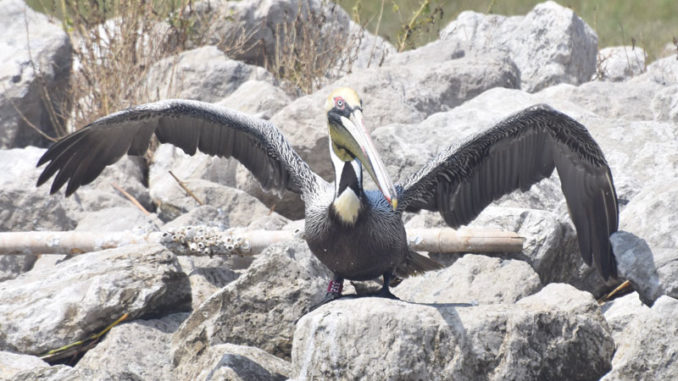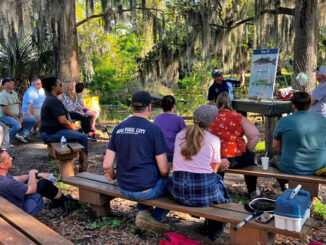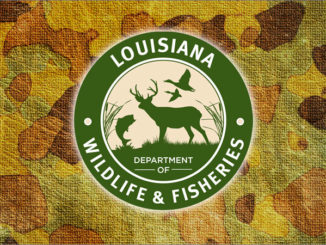
The story of a brown pelican called Red 33Z (its tag color and number) is a story of survival. A victim of the Deepwater Horizon Oil Spill in 2010, the bird was captured on June 14, 2010 near Grand Isle. After capture, it was cleaned and rehabilitated, then flown to a U.S. Coast Guard station in Brunswick, Georgia, where it was released on July 1, 2010 on Georgia’s Atlantic coast. That’s a trip of over 700 miles.
Red 33Z was one of 582 brown pelicans that were rehabbed and relocated to areas biologists deemed a safe distance from the spill. These areas included parts of Louisiana, but also places along the Georgia, Texas, and Florida coasts.
The fear was that the rescued birds would return to areas contaminated by the spill.
“Brown pelicans, like most seabirds, are thought to be hard-wired, genetically, to return to their birth colony to breed, despite moving long distances during the non-breeding season,’’ LDWF Non-game Ornithologist Robert Dobbs said.
An additional 11 birds rescued from the spill were determined not to be releasable; these birds were sent to zoos and sanctuaries.
Bird recoveries
According to an LDWF press release published last week, “More than 5,000 birds, dead and alive, were collected in Louisiana because of the disaster. This comprised approximately 65 percent of the bird recoveries throughout the Gulf of Mexico. Brown pelicans made up 22 percent of all recoveries. Data suggest that the spill resulted in between 51,000-84,000 birds killed, and the actual number was likely on the high end of that scale.”
“[Red33Z] was released in a group of about 70 birds on the Atlantic coast of Georgia,” said LDWF biologist, Casey Wright, who spotted and photographed the bird on Queen Bess Island in Barataria. “The last time that I saw it was in 2012 in Georgia, so whenever I saw it last month, it was the first time it had been seen in 8 years, and it was the first time it was seen in Louisiana since its removal.”
“The bird was banded as an adult,” Wright said, “so that makes it at least fifteen years old. But it could be older than that.”
She said that it is impressive that it made its way home.
“Queen Bess Island, which was heavily impacted by the oil spill, is a key colonial water bird nesting colony that accounts for 15-20 percent of young brown pelicans hatched in Louisiana in a given year,” the LDWF news release said. The island is now managed as a refuge.
Queen Bess island, which had been reduced to about five acres of available nesting habitat before a LDWF restoration project in 2019-2020, now provides 36 acres of prime real estate for brown pelicans and other birds.
Red 33Z’s story is proof that human compassion can overcome adversity, and that in time, a place can recover from tragedy; it can recover, and more: It can soar.

